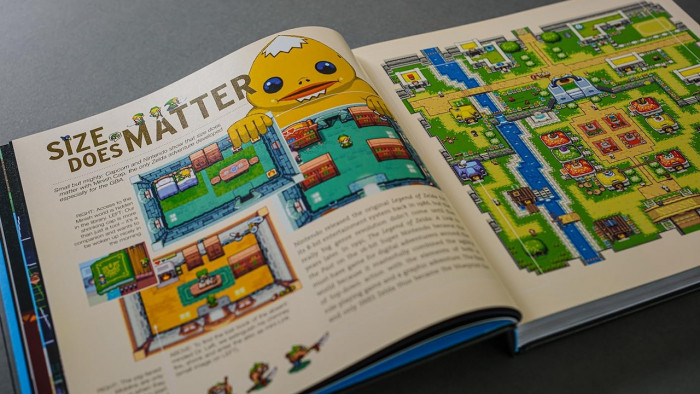15 things you (probably) didn't know about The Tempest
15 things you (probably) didn't know about The Tempest


Magic, music and merriment, The Tempest is an enduring classic. Whether it bored you rotten in English lessons or gripped you on the stage, it's long been seen as one of Shakespeare's finest works.
While most of fans of Shakespeare's comedy will be familiar with its veiled comments on the ills of colonialism and family feuds, the play and its legacy hide a feast of other lesser known facts and trivia. From its many operatic adaptations to its intergalactic presence, here are 15 things you (probably) didn't know about one of the Bard's final plays.
GIVE OUR ULTIMATE TEMPEST QUIZ A TRY
(Images: Rex; Wikicommons)

Earliest known performance
One of the last plays written by Shakespeare (popular scholarly opinion asserts that he only wrote three or four more), the first recorded performance of The Tempest was on 1 November 1611 before James I and the English royal court at Whitehall Palace on Hallowmas night. A record in the Revels Account Book (a document that recorded the events of royal festivities) states that the Kings Men performed the play in the banqueting hall at Whitehall Palace. That said, it is likely the play was performed before this royal visit, as plays were seldom performed in court prior to a public staging.

The Mysterious Contemporary Source
Like any good dramatist, Shakespeare often worked from contemporary sources to connect his plays to the world his audience knew. However, identifying a source for The Tempest has always divided historians and critics (particularly if they call the Shakespeare authorship into question). Most support the notion that the play is based on an amalgamation of sources, including a crucial document from William Strachey, titled A True Reportory of the Wracke and Redemption of Sir Thomas Gates, Knight. This eyewitness account of a shipwreck of the vessel Sea Venture on the island of Bermuda was first reported in 1609, and could well have come to Shakespeare's attention before Stratchey published it officially in 1625. Other works cited as influencing The Tempest include Erasmus's Naufragium and Peter Martyr's De orbo novo.

An Operatic Favourite
The musical qualities of The Tempest has seen it adapted for operatic performances throughout its history - a giddy 46 in all. The first such adaptation was a masque - or semi-opera - penned in 1695 by Henry Purcell, with additional music by Matthew Locke and John Weldon. A notable operatic adaptation was that of John Christopher Smith in 1725. Frank Martin's 1955 Der Sturm is based on a German translation of the play, while Michael Nyman's 1991 Noises, Sounds & Sweet Airs is also based on the work. More recently, Thomas Adès wrote an opera based on the play in 2004. Mozart was supposedly commissioned to write a Tempest opera, but little evidence exists to support this claim.

Turning a phrase
The far-ranging influence of The Tempest is readily demonstrated by the number of common phrases and expressions that have migrated from the play. These include: "Brave new world", "In a pickle", "Melted into thin air", "sea change" and "Such stuff as dreams are made on".

Word play
The play also contains several words purportedly coined by Shakespeare (he was probably the first write them down or include them in a work of fiction, even if he didn't personally invent them). These include: abstemious (from the Latin absetmius, to indulge only very moderately in an alcoholic drink), baseless, eyeball, leaky and watchdog.

The Male-heavy play
With Miranda the only (human) female character, The Tempest has one of the lowest number of female characters amongst his plays. Timon has only two speaking female characters, while Cardenio, a lost play, is thought to have just two female roles. The Tempest does have three female deities in the form of Iris, Ceres and Juno, but Miranda is the sole human woman.

The Western
Shakespearean plays have a rich history of inspiring obscure film adaptations (The Lion King springs to mind), and The Tempest furthers the tradition. The 1948 western Yellow Sky is a subtle-yet-solid adaptation of the play: Fleeing a bank robbery, a band of outlaws stumble across an old man and his daughter in an abandoned town. Magic is swapped for gold, while Caliban is paralleled by a band of Apache.

A Brief Tragicomedy
With only 2,600 lines and roughly 17,233 words (as printed in the First Folio), The Tempest is one of Shakespeare's shortest plays. Only A Midsummer Night's Dream (16,511) and A Comedy of Errors (14,701) contain fewer words.

Performed In Thin Air
With 21 productions, The Tempest is the most performed Shakespeare play in the history of BBC Radio broadcasting.

The Final Solo Work
Assuming it was written in or before 1611, the majority of scholars agree that The Tempest is Shakespeare's final solo work. Of the three works believed to have been written after The Tempest, the authorship of Cardenio remains ambiguous, Henry VIII is believed to have been written with John Fletcher, as is The Two Nobel Kinsmen.

The Moons of Uranus
Thanks to a precedent set by John Herschel, son of astronomer William Herschel who discovered Uranus, two regular moons and seven of the outermost moons of Uranus are named after characters from The Tempest. These include Ariel, Miranda, Caliban, Sycorax, Prospero, Setebos, Stephano, Trinculo, Francisco and Ferdinand.

Shakespeare's Musical?
The Tempest contains more music and musical interludes than any other Shakespeare play. Two arrangements that might have been used in Shakespeare's time still exist - one for "Full Fathom Five" and another for "Where The Bee Sucks There Suck I", both printed in the 1659 publication Cheerful Ayres or Ballads'. The scores are attributed to Robert Johnson, who regularly composed for the King's Men.

Varying popularity
Once the Puritans brought an end to English Renaissance theatre in 1642, The Tempest dropped out of the public eye. When the Restoration reinstated the right to perform plays in theatres, adapted versions of The Tempest overshadowed Shakespeare's original work - such as Sir William Davenant and John Dryden's The Enchanted Island. It wasn't until William Charles Macready's influential production in 1838 that Shakespeare's script regained prominence.

A rigid structure
Unlike most of his plays, The Tempest sees Shakespeare conform to Aristotle's unities - the neoclassical notion that drama should follow three rules: unity of action (a play should have one main plot line with few distractions), unity of place (it should take place in one physical space) and the unity of time (the action fit within 24 hours). In the final act, Alonso even declares that the action of the play takes place in around three hours.

An space-aged legacy
The first British satellites have furthered the other-worldly legacy of The Tempest's characters with a fitting tribute: The Ariel 1 was the first British satellite in space, launched by Nasa in 1962, in addition to six other Ariel satellites developed between 1962 and 1979. In 1971, the Black Arrow R3 rocket launched "Prospero X-3", the only British satellite to be launched using a British rocket.








